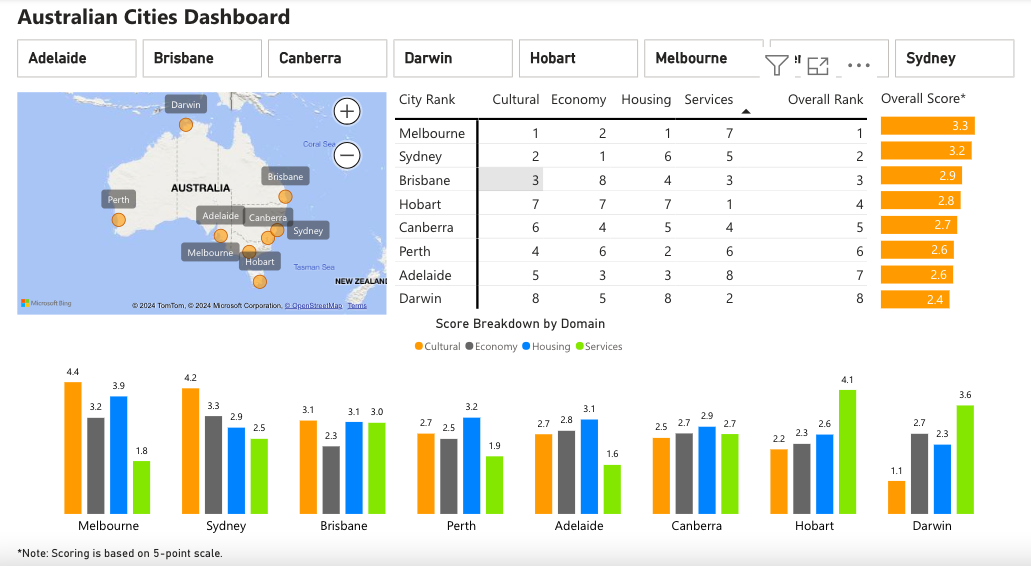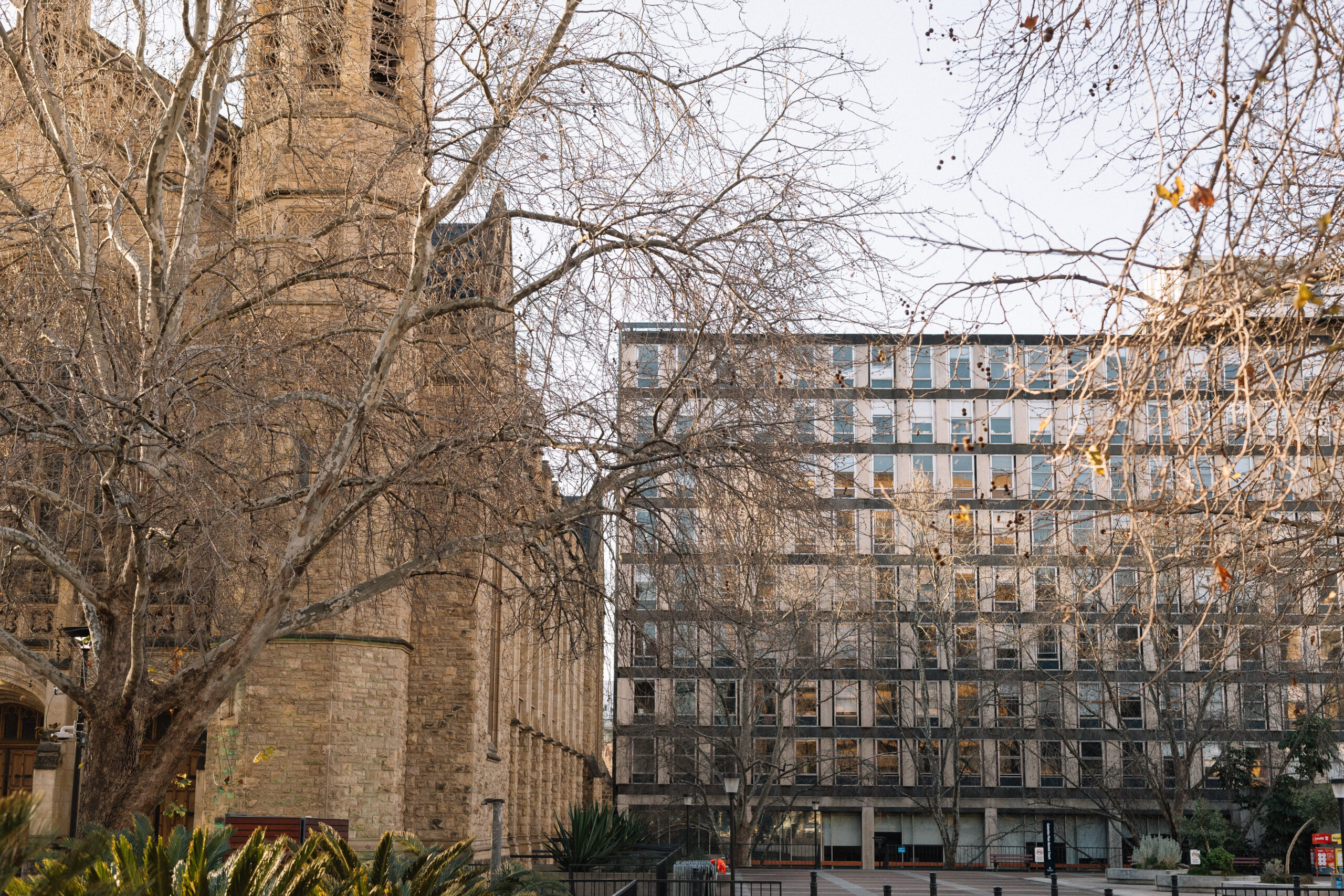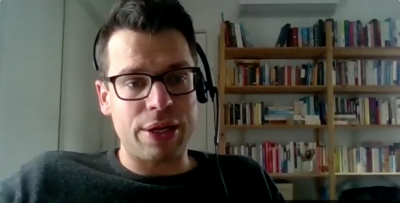Which Australian City is the ‘Best’ ? – A City Ranking Analysis
As part of my academic internship, I undertook a secondary data collection project, including the creation of a Power BI dashboard. This project aimed to compare Adelaide with other major Australian cities to understand its strengths and identify areas for improvement. The evaluation focused on four key pillars: cultural/lifestyle, economy, housing, and community services which include education, healthcare, aged care, childcare, and community involvement.
Methodology and Data Sources
This secondary research project relied primarily on publicly available data, with significant contributions from the Australian Bureau of Statistics (ABS) and various government websites. The analysis included eight cities: Adelaide, Brisbane, Canberra, Darwin, Hobart, Melbourne, Perth, and Sydney. While there were limitations in the availability and comprehensiveness of certain metrics, the project successfully provided valuable insights.

Key Findings
Melbourne tops the overall ranking with a score of 3.3 out of 5 points scale, excelling particularly in Cultural and Housing domains with the first ranks. It ranks second in Economy, although falls short in Community Services. Sydney follows closely with an overall score of 3.2. It leads in Economy and performs well in Cultural, ranking first and second respectively, while its primary shortcoming is in Housing where it ranks sixth.
Brisbane holds the third position with a score of 2.9. It ranks third in both Cultural and Community Services, but with a lower ranking in Economy. Hobart and Canberra have similar overall scores of 2.8 and 2.7, respectively. Hobart’s strengths lie in Community Services, while Canberra excels in both Economy and Community Services. Darwin lags behind with an overall score of 2.4, struggling in Cultural and Housing, but performs well in Community Services.
Perth and Adelaide are tied at an overall score of 2.6, with Perth showing strength in Housing (second place) whereas Adelaide performs better in both Economy and Housing (both in third place).
Adelaide’s Strengths and Improvement Priorities
The key priorities for Adelaide lie in the Cultural and Community Services domains.
Adelaide ranks fifth in the Cultural domain with a score of 2.7. Metrics show that the participation rate in cultural events/activities is four times lower in Adelaide, and the ratio of discrimination experiences in the past 12 months (16.7%) is higher compared to top-ranked, Melbourne (11.3%). Encouraging diversity and cultural initiatives while supporting local artists could strengthen Adelaide’s cultural identity and enhance the city’s cultural vibrancy.
Adelaide’s ranking of eighth in the Community domain with a score of 1.6 is attributed by the low percentage of education attainment above Year 12 (e.g. Certificate, Diploma, Bachelor), as well as the limited availability of aged care and childcare services per capita. Continued investment in more affordable higher education and accessible community services could potentially improve Adelaide’s standing and make it a more competitive city on the national stage.
This project is an illustrative example inspired by various past and ongoing initiatives focused on flourishing cities. Square Holes excels in both primary and secondary research, providing comprehensive reports and dashboards to drive organisational success. Whether you need to address a specific business question or to identify opportunities, Square Holes welcomes you to partner with us, to deliver the insights you need.
…




